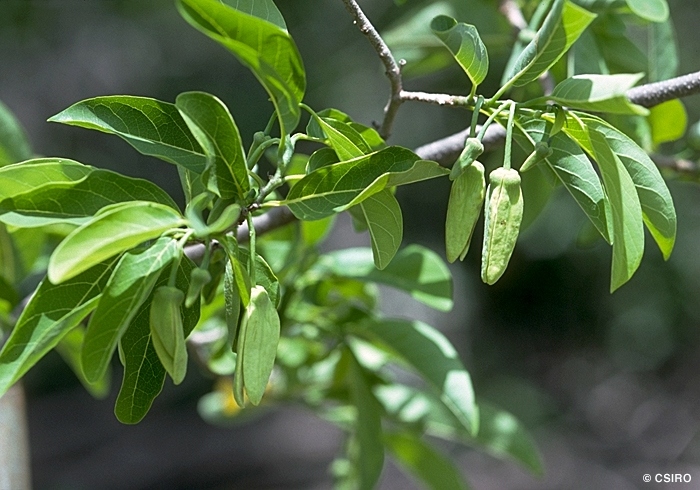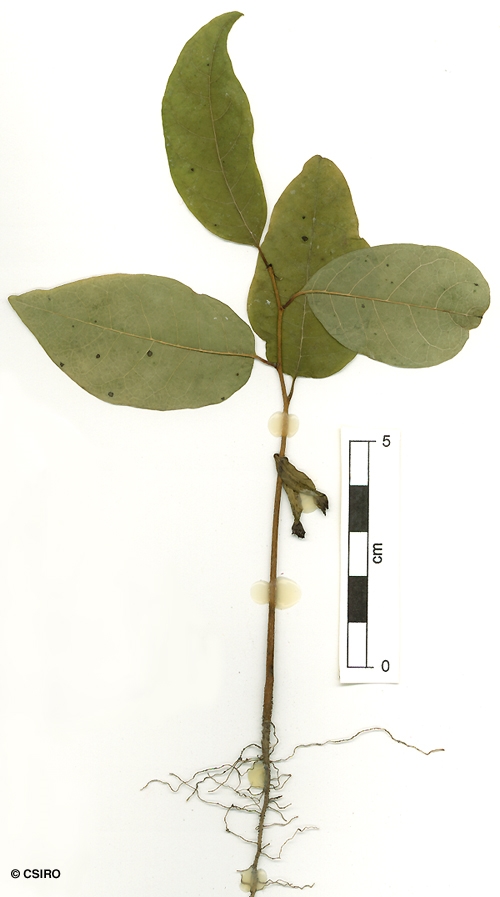Australian Tropical Rainforest Plants - Online edition
Annona squamosa L.




Linnaeus, C. von (1753) Species Plantarum : 537. Type: Indonesia?.
Sweetsop; Anon; Apple, Custard; Apple, Sugar; Sugar Apple; Custard Apple
Usually grows into a small tree but also flowers and fruits as a shrub.
Fruits formed by the fusion of numerous carpels. Fruits about 5-10 cm diam. Surface of the fruit knobbly or bumpy. Seeds ovoid-ellipsoid, smooth, black, about 12-14 x 7-8 mm, embedded in white edible flesh. Endosperm marked by numerous brown ruminations. Embryo straight, small, about 3 x 1.5 mm. Cotyledons slightly longer than the radicle.
Cotyledons normally fall from the seedling while still enclosed in the testa. First pair of leaves glabrous, much paler and somewhat glaucous on the underside, apex acute or obtuse, base truncate or obtuse. Oil dots visible with a lens. At the tenth leaf stage: leaves alternate (two ranked) rather than spirally arranged, leaf blade ovate to elliptic, apex acute to acuminate, base obtuse, lateral veins about 7-9 on each side of the midrib, lateral veins forming loops inside the blade margin. Leaf blade much paler on the underside. Petiole channelled on the upper surface. Midrib depressed on the upper surface. Plants mainly glabrous with hairs present only on the younger leaves and younger stem parts. Seed germination time 901 to 956 days.
An introduced species, originally from tropical America, cultivated for its fruit. Now naturalised in NT, CYP, NEQ, CEQ and possibly in south-eastern Queensland. Altitudinal range from near sea level to 500 m. Grows in open forest, monsoon forest and vine thickets.
This species was probably introduced because it produces a sweet fruit which resembles the commercial Custard Apple commonly grown in Queensland. The anecdote regarding the origin of the commercial Queensland Custard Apple placed its origin at the site of Cloudland Ballroom in Brisbane. It was believed to be of hybrid origin and was subsequently propagated by grafting.
Food plant for the larval stages of the Green Spotted Triangle, Pale Green Triangle and the Green Triangle Butterflies. Sankowsky & Neilsen (2000).
Seeds poisonous. Austin, D. F. 1998. Poisonous Plants of Southern Florida.





